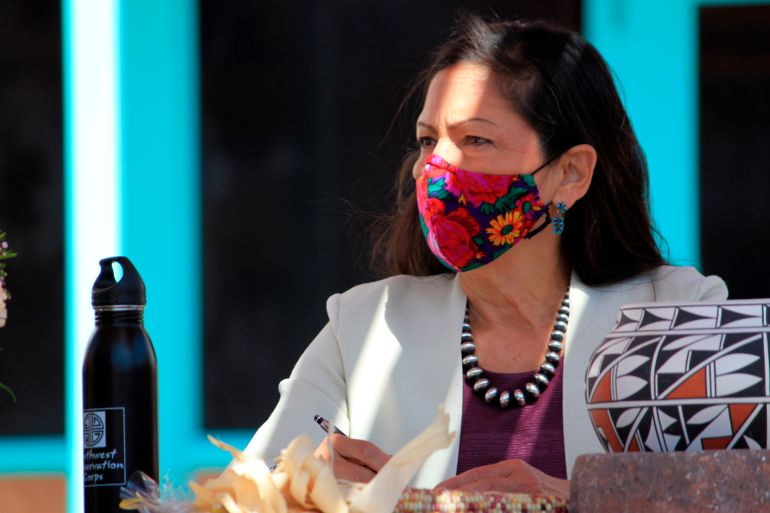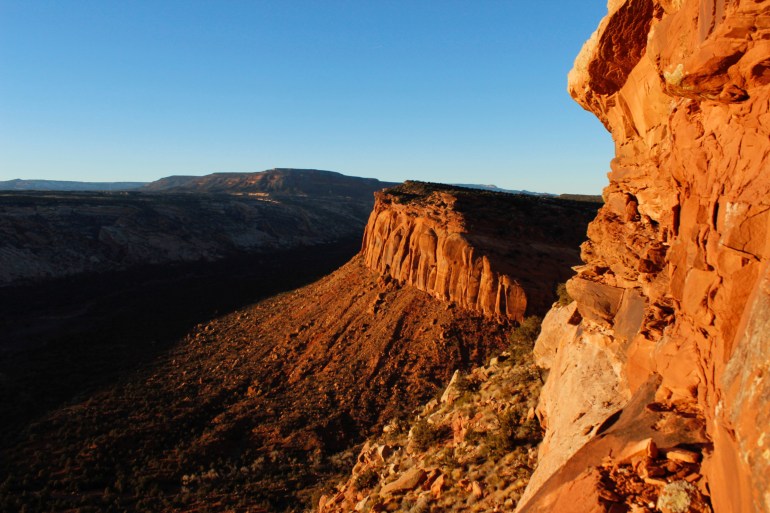Haaland visits Utah with eye on sacred Indigenous monuments
Haaland, the first Indigenous person to administer US public lands, looks to restore Utah monuments shrunk by Trump.

United States Interior Secretary Deb Haaland will kick off a two-day visit to Utah on Thursday where she will meet tribes and political officials to discuss the potential restoration of two national monuments that were slashed in size by former President Donald Trump in order to open them to mining and drilling.
The visit is the centerpiece of Haaland’s first multi-state tour since being confirmed last month as the first Native American cabinet member, and will hold symbolic power given the importance of the monuments to Southwestern tribes.
Keep reading
list of 3 itemsHaaland hearings signal uphill battle for Biden’s climate agenda
Deb Haaland confirmed as first Indigenous US interior secretary
Haaland, whose job gives her oversight of America’s vast public and tribal lands, will visit Utah’s San Juan and Kane counties to discuss the Bears Ears and Grand Staircase-Escalante National Monuments as part of a review of their boundaries launched by Joe Biden on the Democrat president’s first day in office, according to the Interior Department.

Trump had cut the size of the two formerly massive monuments by 8,000sq kilometres (two million acres) combined at the request of Utah’s Republican legislators, removing protections that had hindered ranching, drilling, mining, and other development in an area twice the size of the US state of Rhode Island.
Several Native American tribes in the region consider the areas sacred and home to thousands of important cultural and archaeological sites. They will ask Haaland to restore the protections cut by Trump and expand them further, according to Pat Gonzales-Rogers, director of the Inter-Tribal Coalition.
“We are consistent in what we are asking for. The original tribal proposal and a path to making that permanent,” he said.
Former President Barack Obama had created the 5,260sq km (1.3 million acres) Bears Ears National Monument in 2016 under the US Antiquities Act after tribes originally proposed the site to cover 7,689sq km (1.9 million acres). Trump cut it to approximately 809sq km (200,000 acres).
Grand Staircase-Escalante, was created by former President Bill Clinton in 1996 at 7,689sq km (1.9 million acres) and was cut roughly in half by Trump.

Under the Antiquities Act, presidents have the authority to create or alter national monuments unilaterally, which makes their protections uncertain over time.
The Department of the Interior said administration officials have held tribal consultations and spoken with Republican officials in the state in advance.
Utah’s Republican Governor Spencer Cox, Senator Mitt Romney and Congressman John Curtis also met tribal leaders from the Hopi, Navajo Nation, Ute Mountain Ute, Pueblo of Zuni, and Ute Indian to try to reach a compromise ahead of Haaland’s visit, said Romney spokesperson Arielle Mueller.
“During the meeting, Senator Romney reiterated his desire to finding a permanent legislative solution to the political football of Utah’s national monuments,” she said.